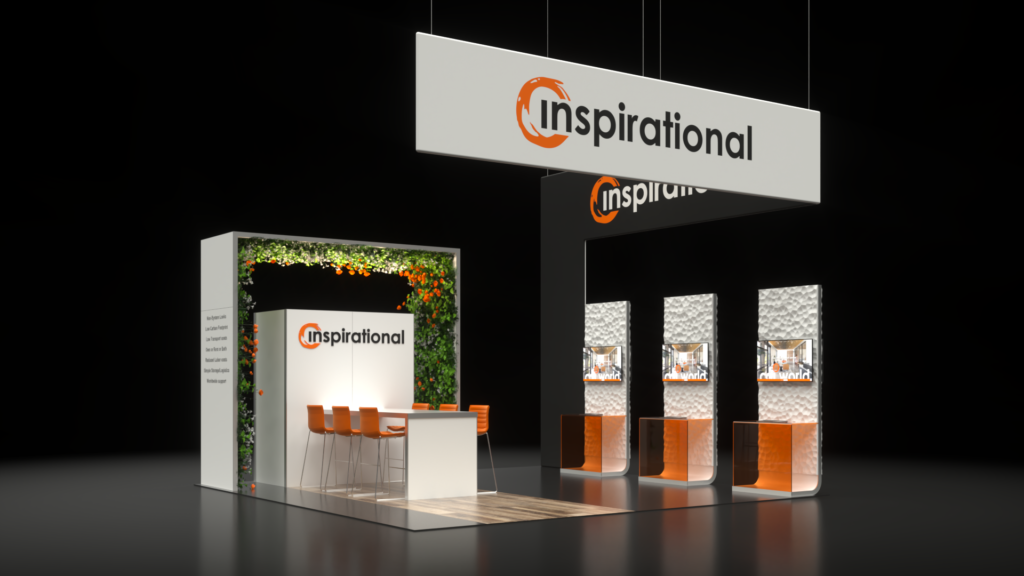


The trade show industry can take inspiration from the success and strategy of one of the world’s greatest toy brands, thinks CDI World’s modular systems champion, John Aiani.
There are parts of the globe where children and their parents haven’t heard of Legos (or just plain Lego as it’s called outside the US), but only a few. It’s not only one of the biggest toy manufacturers in the world, it’s arguably one of the most iconic brands out there – regardless of market sector.
The founder, Kirk Christiansen, started out making wooden toys and named the company after the Danish phrase “leg godt” meaning “play well” in 1934. Lego’s first plastic brick appeared in 1949 but the one we all know today, with its wonderfully simple interlocking design, wasn’t patented until 1958. From that point the brand took off.
Lego depends on consistent precision manufacture – those bricks just wouldn’t work without it – and we apply the same attention to detail in our builds.
It hasn’t all been plain sailing. There was a worrying spell in 2004 when, largely due to being a little over ambitious, the company teetered on the verge of bankruptcy. Thankfully, after some smart consolidation, things turned around and the firm, still family owned, never looked back.
Any company that can boast well over sixty years of success is doing something right, and Lego has become a go-to example for branding and business gurus who use it as the ultimate illustration of good marketing. And while our industry is all about supporting brands rather than developing them, Lego can offer us all some useful lessons.
A toy that’s actually millions of potential toys, that stimulates the creative imagination from the moment you fix the first blocks together, that gives fast results, that you can always use more of, and that makes buying presents for kids (and many adults) a darn sight easier. What’s not to love?
But even great ideas don’t always live up to their potential or prosper in the unforgiving rapids of the marketplace. So how does Lego keep its cool and withstand the regular attacks from eager competitors? They may be in the toy business but the commercial imperatives are as weighty as they come.
Start by looking at the amazing variety and sheer number of Lego marketing initiatives and campaigns over the decades. The company’s history lists an impressive series of creative moves calculated to stimulate interest and sales.
These include the introduction of Minifigures allowing role play, the extensive use of themed sets linked to major franchises like Star Wars or Harry Potter, the integration of robot technology and digital programming, not to mention the popular theme parks and the “experience” locations where fans of all ages can build their dreams from millions of bricks.
Lego has also starred in its own animated movie franchise, the Lego version of DC’s Batman being particularly successful. More recently, the brand has broken through into television with the Lego Masters show in which competing teams of enthusiasts take on all kinds of creative challenges set by judges.
All this activity indicates this is a business that never sits back and relaxes its drive to stay engaged with its customers and adapt to the trends of the day. But, at the same time, it remains true to its original concept. While many hundreds of new components have been added to its repertoire over the years, the company has never lost touch with its core product – the interlocking plastic brick.
Well, as builders of trade show structures for some of the world’s top brands we understand the importance of quality and how critical it is to customer satisfaction and perception. Lego depends on consistent precision manufacture – those bricks just wouldn’t work without it – and we apply the same attention to detail in our builds.
Lego’s constant renewal and willingness to incorporate emerging technologies and trends is another attitude we share with the toymaker. The incorporation of mixed reality into physical show booths, for example, is generating considerable interest and is offering our clients fascinating ways to engage visitors.
The most pertinent parallel, though, is our investment in high performance modular exhibit systems as part of our service. Like the Lego brick, these easy to build, well engineered systems are incredibly adaptable and, with imagination, can create amazing spaces that transcend their components and can be judged purely on their aesthetic merit.
They also come with the inherent advantages of a high quality construction set – they’re reusable, lightweight and extremely robust – saving energy, materials, shipping and disposal costs. Good for budgets and better for the planet, modular systems have come of age and, like Lego, will continue to perform and surprise for many years yet.

Want to know more about our modular systems?
Talk to us today to find out how we can support you with your exhibit or event, ensuring a memorable and impactful brand experience.
Contact Us